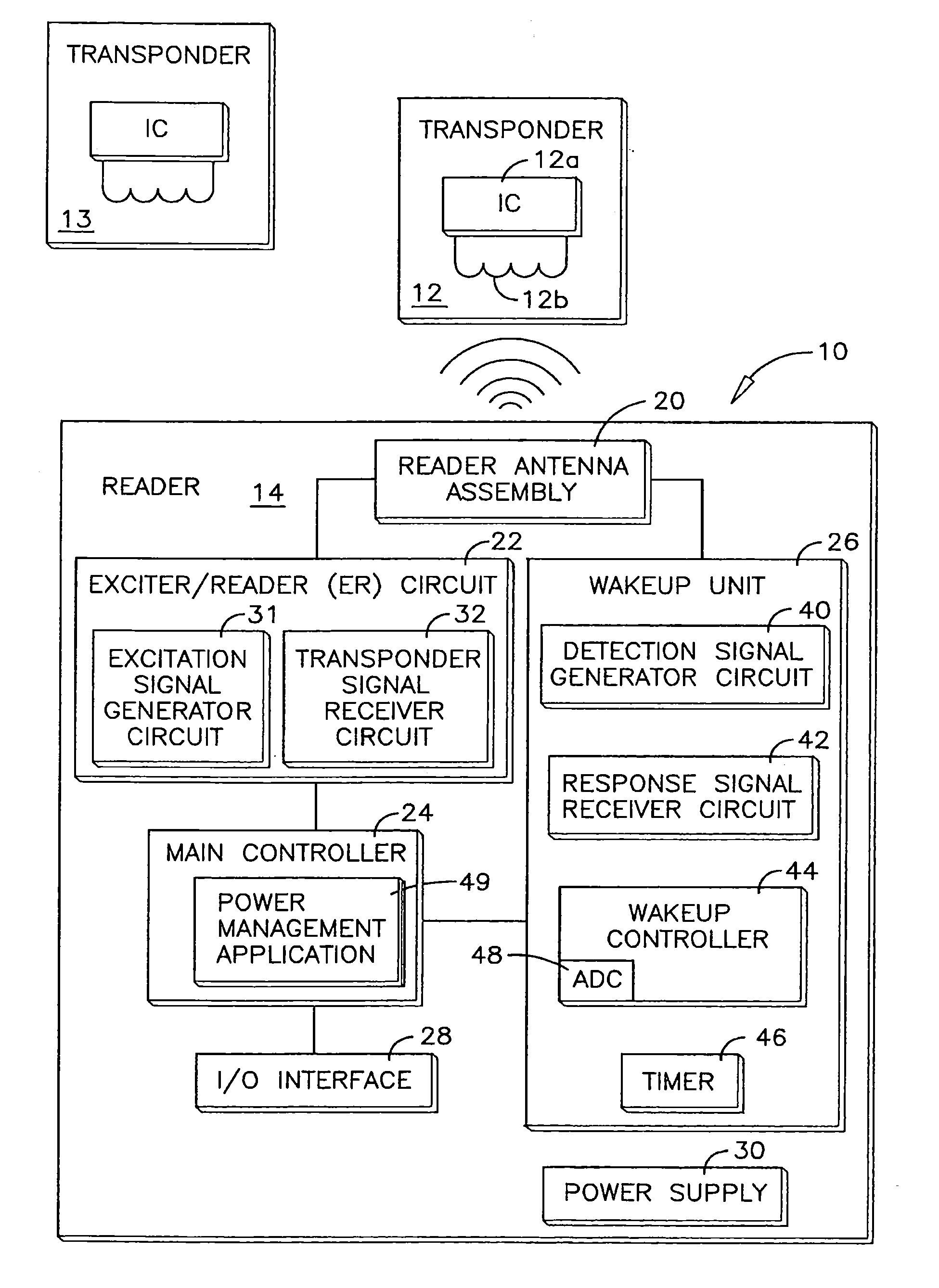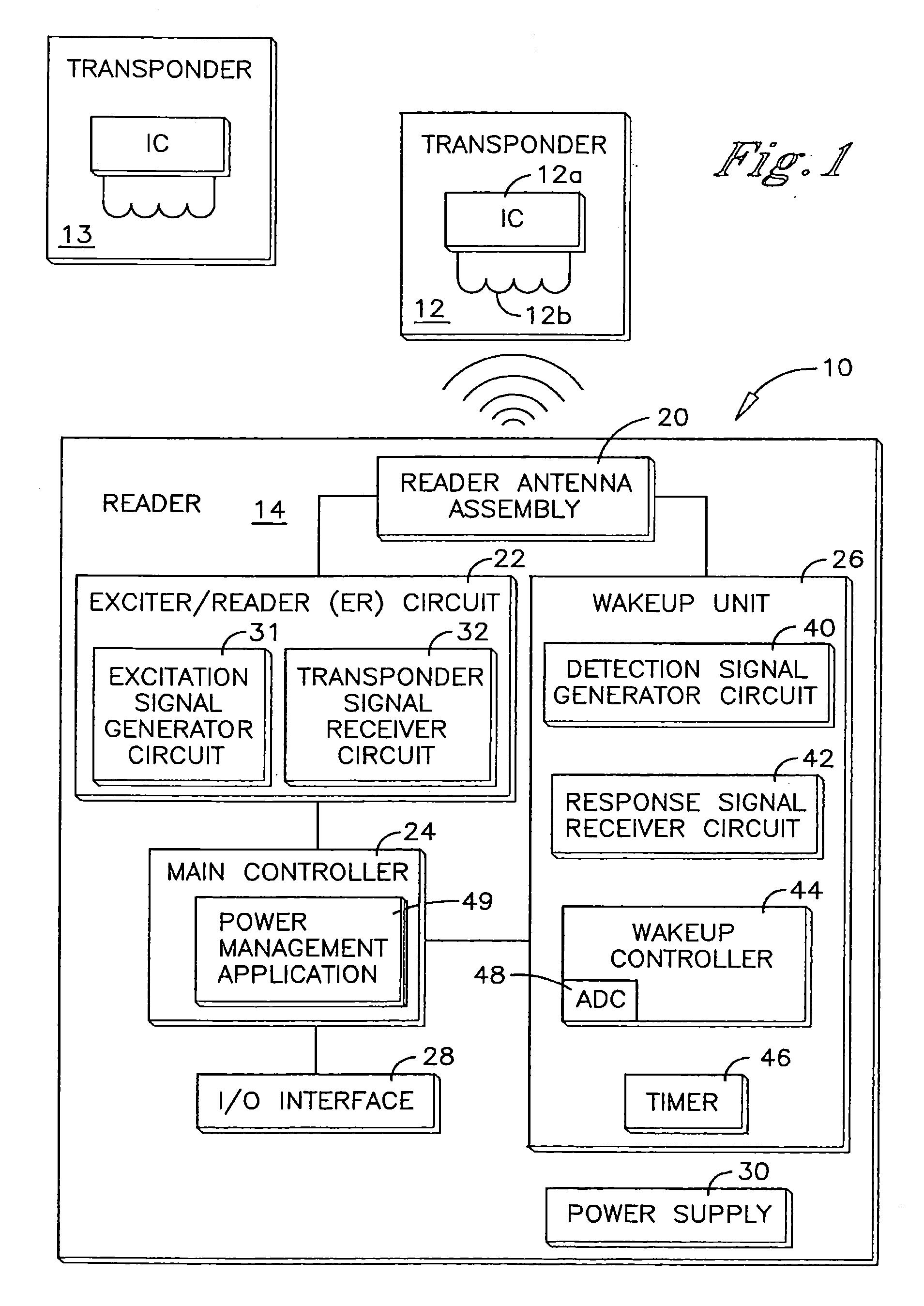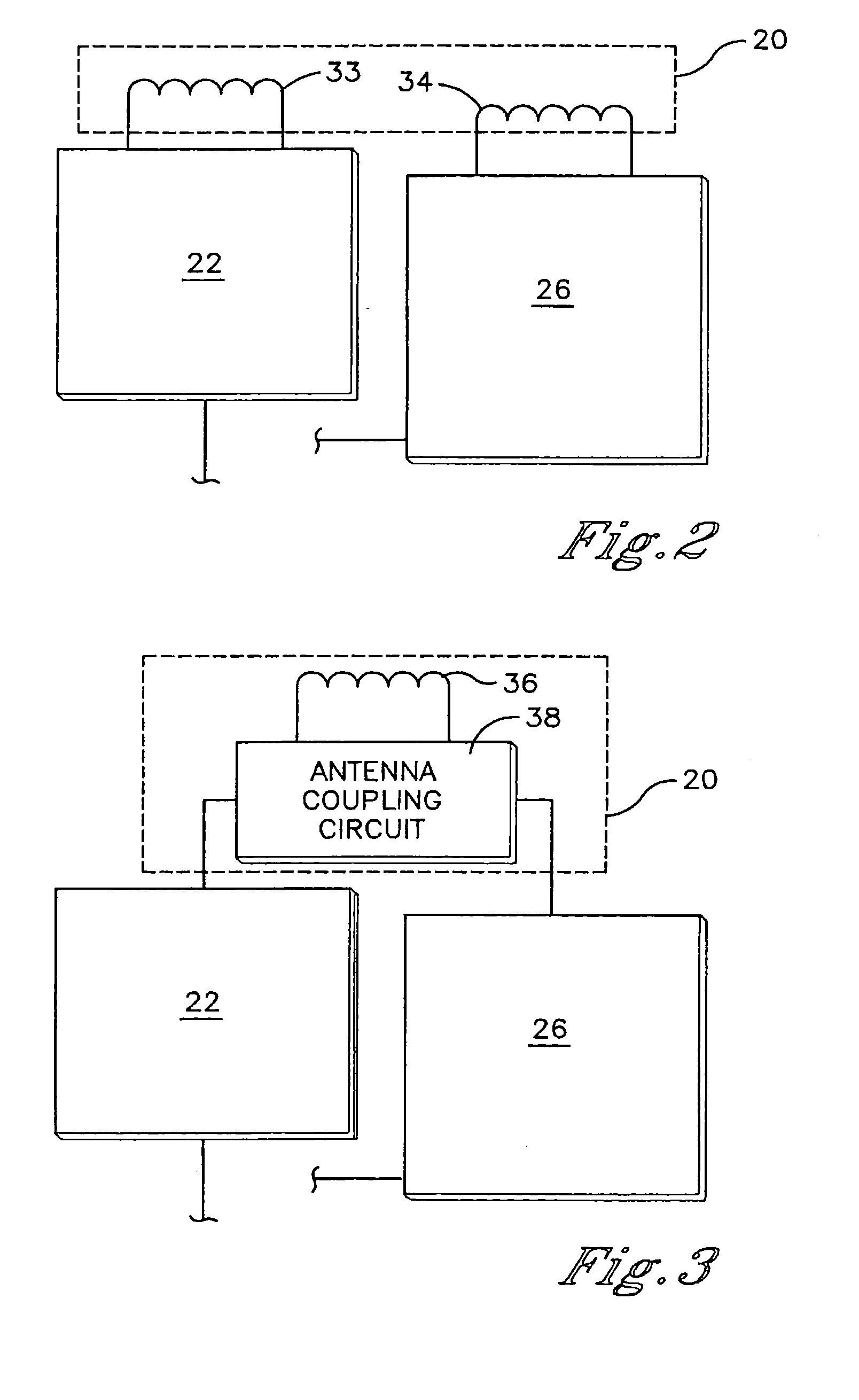Switched capacitance method for the detection of, and subsequent communication with a wireless transponder device using a single antenna
a wireless transponder and capacitance technology, applied in the field of rfid systems, can solve the problems of high power demand of data transaction mode, particularly undesirable condition, and rapidly deplete the power supply of the reader, and achieve the effect of reducing the amount of energy consumed by the reader and increasing power consumption
- Summary
- Abstract
- Description
- Claims
- Application Information
AI Technical Summary
Benefits of technology
Problems solved by technology
Method used
Image
Examples
Embodiment Construction
[0036]The invention will be illustrated below in conjunction with an exemplary reader device. Although well suited for use with, e.g., a system using access control readers and / or transponders, the invention is not limited to use with any particular type of access control system or configuration of system elements. Those skilled in the art will recognize that the disclosed techniques may be used in any RF system n which it is desirable to minimize power consumption of the reader.
[0037]The exemplary systems and methods of this invention will also be described in relation to analysis software, modules, and associated analysis hardware. However, to avoid unnecessarily obscuring the present invention, the following description omits well-known structures, components and devices that may be shown in block diagram form, are well known, or are otherwise summarized.
[0038]For purposes of explanation, numerous details are set forth in order to provide a thorough understanding of the present i...
PUM
 Login to View More
Login to View More Abstract
Description
Claims
Application Information
 Login to View More
Login to View More - R&D
- Intellectual Property
- Life Sciences
- Materials
- Tech Scout
- Unparalleled Data Quality
- Higher Quality Content
- 60% Fewer Hallucinations
Browse by: Latest US Patents, China's latest patents, Technical Efficacy Thesaurus, Application Domain, Technology Topic, Popular Technical Reports.
© 2025 PatSnap. All rights reserved.Legal|Privacy policy|Modern Slavery Act Transparency Statement|Sitemap|About US| Contact US: help@patsnap.com



